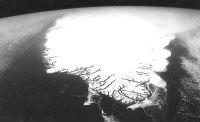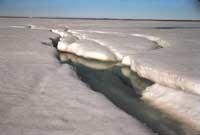Greenland emerges
2000/08/06 Carton Virto, Eider - Elhuyar Zientzia
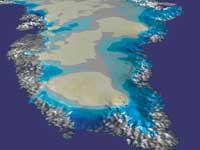
Complex systems such as the terrestrial climate cannot be understood spontaneously, so researchers often use crossings. They analyze a specific characteristic or process of the system and, taking advantage of what was seen in it, try to understand the whole. Research on the Greenland ice sheet, for example, will serve to understand global warming or changing the atmosphere over time.
One of these studies has been conducted by the American organization NASA. The results, recently published in the scientific journal Science, indicate that the ice sheet covering Greenland is narrowing. Slimming is not homogeneous. On the coast is producing a strong and fast melting of the layer (in some areas almost one meter per year), while in the interior a somewhat thicker layer has been made.
Second frozen region
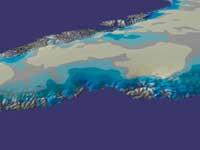
After Antarctica, Greenland is the region with the most ice. In fact, 85% of the island is covered with ice and according to NASA's study, this ice mass is melting at the rate at which a significant sea level change occurs. In particular, about 51 cubic kilometers of water (i.e. 51 million liters of water) of the island are lost or left to the sea each year. This amount of water causes sea level on Earth to rise 0.13 millimeters a year. The rise does not seem very significant, but it is thought that the sea level of human life rises a centimeter. The climb is vertical and a vertical centimeter can occupy many horizontal meters on the flat beach.
The 51 cubic kilometers that Greenland dedicates each year to the sea make the sea level rise only 7%. That is, 93% of the increase is due to other factors. However, researchers point out that thawing the island's ice sheet is not, for the moment, a threat to coastal peoples. Of course, it has become clear that the ice sheet is changing.
Throughout history, oceans and ice sheets around the poles have changed. From the last 110,000 to 130,000 years, that is, from the last interglacial period, the sea level has risen approximately four meters. The most important thing, therefore, is not to measure the current rise, but to understand how the processes that occur both by human action and naturally affect the large masses of land ice.
7 year research
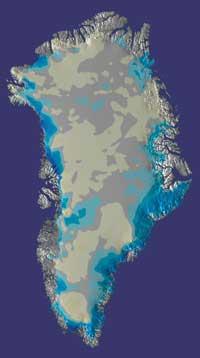
NASA imposed the Greenland investigation in 1993. The measurements were carried out in two shifts: The first between 1993 and 1994 and the second between 1998 and 1999. On two occasions they have accurately measured the nature and thickness of the island's ice sheet and compared the data collected with each other and with other studies. The technology developed for the realization of the topographic map of Mars and the high-precision GPS system has been used for data collection.
The explanation of what is happening in the Greenland ice sheet is not easy, as while the ice melts on the coast, inside the layer has slightly thickened. How? Melting ice near the coast fills the atmosphere with moisture and as moisture increases, atmospheric energy increases. As the altitude is lower on the coast, the air warms up and rises. Hot air moves into the inner ice layer that covers most of Greenland, where altitude increases and cools. When the humidity (i.e. water vapor) is cooled it condenses and falls in the form of snow. Over time the snow freezes and forms part of the ice sheet. The thickening of the central ice sheet of the island is therefore an indicator of the melting process that is taking place on the coast.
Planet thermostat
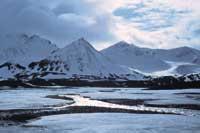
Greenland ice research is important for the entire plan.Although it is zonally the seventh part of Antarctica, it is located in warmer latitudes and may be a more favorable indicator of climate change than the southern ice mass. Both southern and northern ice acts as a thermostat of the planet, as the solar ray reflects into space and regulates temperature. In addition, most of the freshwater on Earth is trapped in it, allowing coastal populations to not be submerged.
10,000 years ago the ice sheet spread far from the limits of Greenland's land mass, but as the weather warmed the glaciers on the island's shores began to melt millions of liters of water into the sea. Between the planet it was getting warmer, partly because ice had less and less ability to reproduce the hot rays into space. Currently the Greenland ice sheet is neither growing nor as thick as the old one. Much of the ice perimeter lies within the boundaries of the island and although the land mass of the island has not changed too much, the corresponding surface and ice volume have decreased considerably.
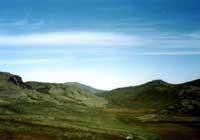
70% of regions less than 2000 meters are thinning the ice sheet, while in those more, this is what can be deduced from NASA research for the moment. The rapid thaw is not only produced by the increase in temperatures, since the hottest summers than the current ones have been before and then the ice did not melt so quickly. They suggest that low glacier areas may be eroding faster. The glacier that moves faster drags more ice into the sea and can cause thinning of the layer. However, they have no proof of this second explanation.
Greenland's ice changed a lot in antiquity and today it continues to change, although it is not clear what the transformation is. Therefore, in the coming years research will continue. One of its most important tasks will be to clarify the amount of natural and human origin of this evolution.
White island with green name
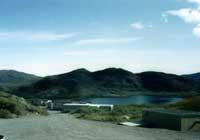
Although very close to Canada, Greenland is part of Denmark. Its inhabitants, therefore, are Danish by name. However, the four fifths of the population are of Inuit (Eskimo) origin. BC. Between the years 4000 and 1000 the Inuit cultures of northern Canada came to Greenland several times. Each migration brought to the island a different inuit culture. d. C. In 982, however, a completely independent visitor arrived from the entire population of Greenland: Viking Erik Gorria. Erik Gorria was born in Norway, but lived in exile in Iceland. After three years exploring the island, he returns to Iceland and prepares the first major trip to Greenland. 500 people and 25 ships left Iceland, but only 14 arrived in Greenland. By 1000 the population of European origin consisted of 400 or 5 00 farms and about 3,000 members. This small community lasted 500 years, but for unknown reasons it disappeared.
Greenland was named after Erik Gorria: She called Greenland the territory that left her completely in love. Some gave it that name in honor of the fjords and meadows of the south of the island. Others believe that, despite knowing it was a white island that green, the name was a trap to attract more migrants.
Published in the supplement Natura de Gara

Gai honi buruzko eduki gehiago
Elhuyarrek garatutako teknologia



